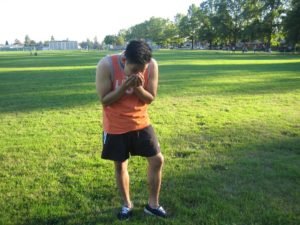Just like with other types of allergies, the best way to manage hay fever is to determine what the individual is allergic to and how to avoid potential triggers. Even though it seems simple, this is much easier said than done. Obviously, many children are allergic to pollen and mold which is both present outdoors and cannot be avoided completely while pollen can be encountered while staying outdoors.
Being exposed to pollen and mold outdoors that enters the house can be reduced by closing the windows and use an air-conditioner, showering and changing clothes. Bedding should be dried using a dryer, not on a clothes line outside.
Indoor mold and dust mites
Aside from the outdoor allergens, an individual might be allergic to indoor substances regularly encountered such as indoor mold and dust mites. These allergens can be controlled by taking into consideration certain changes. On the other hand, they are impossible to eliminate completely. To learn to recognize, manage and help individuals with hay fever and other similar conditions, register for a first aid and CPR course with a credible provider near you.

Dust is known to cause irritation and sneezing. It not only irritates the nose, eyes and throat, but also contains allergenic materials. A main cause of the allergic symptoms is present on the dust itself, such as dust mites. It is important to note that dust mites live wherever humans live since they feed on dead skin cells that are shed on a daily basis.
Dust mites thrive in beds, upholstered furniture, pillows and rugs. Even though regular vacuuming and dusting can help reduce the level of dust inside the house, these will not work effectively on dust mites. The padded furnishings such as box springs, mattresses, cushions and pillows should be covered in allergen-proof covers. Those that are made out of non-woven synthetic fabrics are more comfortable than the plastic covers. Remember that the microscopic fecal particles of dust mites are too large to pass through the allergen-proof covers, thus minimizing the risk for hay fever.
Measures to control the hay fever triggers
- It is important to opt for pillows or blankets that are made out of synthetic materials to prevent hay fever. Since dust mites can survive in warm soapy water, it is best to wash linens every week while other bedding such as blankets should be washed every 2-3 weeks in hot water. After washing, they should be placed inside a hot dryer. In addition, pillows must be replaced every 2-3 years.
- Dust mites are also abundant in stuffed toys. If possible, you have to replace them with those that have smooth plastic bodies and washable clothes. In case a child has a favorite toy, it should be washed every other day in hot water and dry using the highest setting. You can also seal soft toys in plastic bags and store them inside a freezer for at least 5 hours or overnight once in a week. Remember that dust mites could not survive longer than 5 hours.
- You have to store bulky fabrics and dust-accumulating clutter out of the bedroom. If possible, wall to wall carpeting should be removed. The flooring should be tile, wooden or vinyl. For those who prefer rugs for comfort, it is best to use small cotton or synthetic throw rugs that can be washed weekly. Even the curtains must be easily washed.
